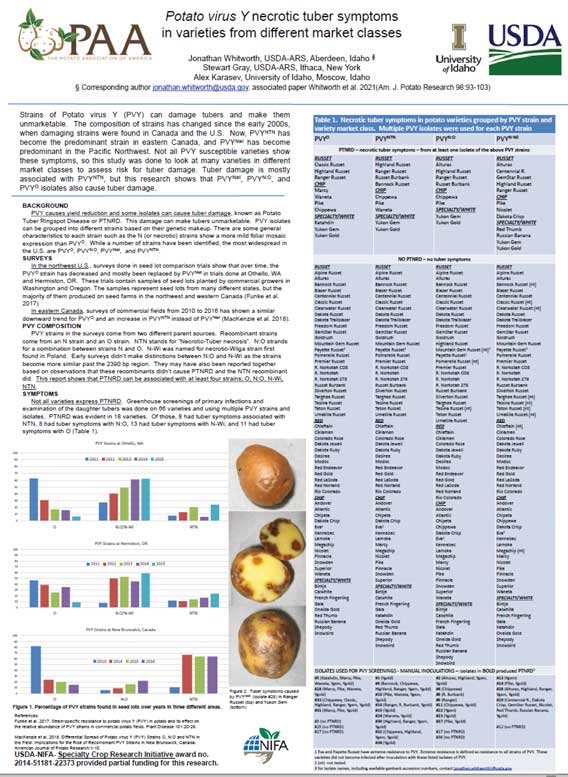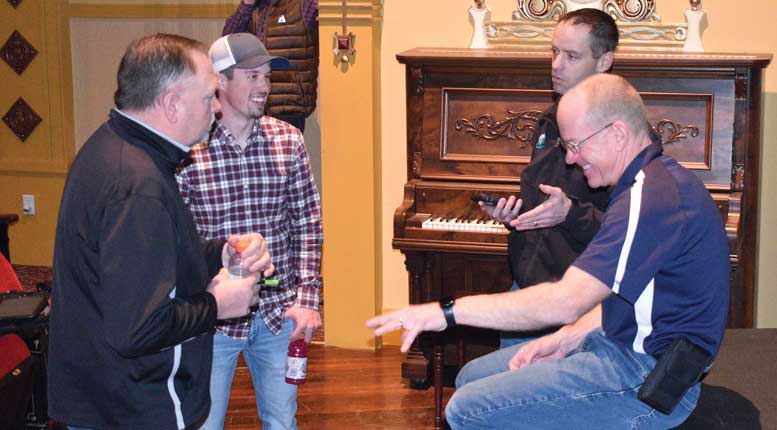|
Click to listen to this article
|
Story and photos by Dave Alexander, Publisher
Miller Research’s annual potato pest management meeting resumed this February after a pandemic-break in 2021. Held in the historic Wilson Theatre in Rupert, Idaho, the meeting featured speakers Jeff Miller and Trent Taysom from Miller Research and Jonathan Whitworth from USDA.
Whitworth, appearing remotely, gave a presentation on seed health to in-person and online attendees. He shared ideas on how to buy better seed, reported on new varieties being bred with disease resistance and spoke of the dangers of Potato virus Y (PVY).
PVY can be identified by mosaic leaves, meaning leaves turned green and yellow in a mosaic pattern.
“We know PVY causes yield loss and quality loss, but risk can be reduced by buying seed with low virus readings,” Whitworth said.

Tags vs. Certificates
Buying blue- or yellow-tagged seed does not guarantee a virus-free crop. Colored tags on seed lots do not indicate disease status. Tags are used to indicate size and grade, along with a few restrictions on appearance that can be caused by diseases.
Instead, growers should ask for inspection reports or plant health certificates to help inform their certified seed supplier decision. Certificates typically give summer field and winter grow-out readings. The summer results tell about tuber-borne virus, but the winter readings tell about the current-season spread of virus. Whitworth said, therefore, the winter inspection gives a better indication of virus level. Valuable information on plant health certificates is often in the “comments” section, which may list all the laboratory tests performed on the seed lot.
“It’s okay to ask multiple growers for plant health certificates when you are making your decisions,” Whitworth suggested.

See For Yourself
In their summer inspections, seed certification agencies make sure there is good separation between lots in the field and also look for disease and variety mix issues. Post-harvest inspections in the fall confirm lot separation in storage.
In addition, Whitworth recommended that commercial growers visit their seed growers. Many commercial growers use the same seed providers year in and year out. But if a grower is buying seed from a new supplier, it helps to see what their operation is like. Attention to detail on seed farms translates into what they supply.
As a final thought on seed choice, Whitworth recommended slowing down when making choices and making sure you have all the information available.

Miller’s Thoughts
Jeff Miller gave these recommendations on preventing seed piece decay:
- Purchase seed with as little dry rot as possible.
- Plant uncut seed, if possible.
- Sterilize seed-cutting equipment.
- Sharpen seed-cutting knives.
- Ensure pre-cut seed is suberized properly or reduce time between cutting and planting.
- Use an effective seed treatment.
- Avoid planting into cold, wet soil.

